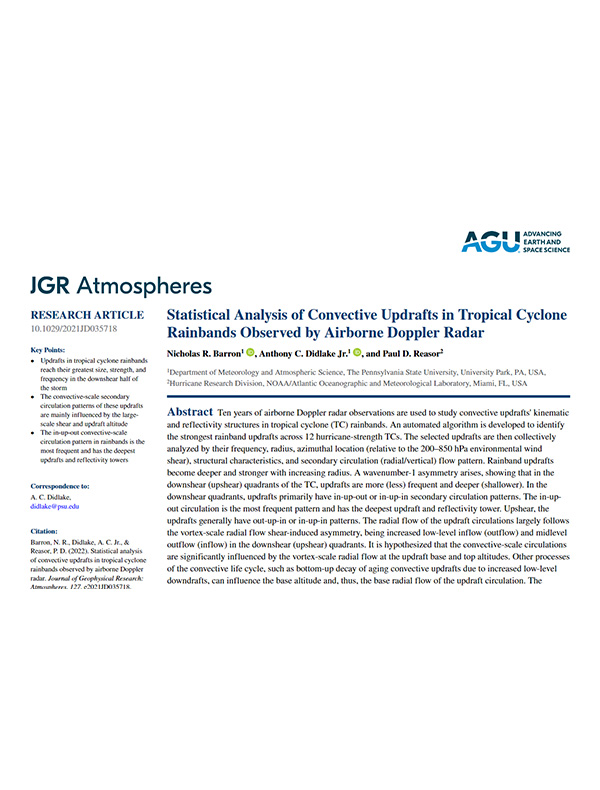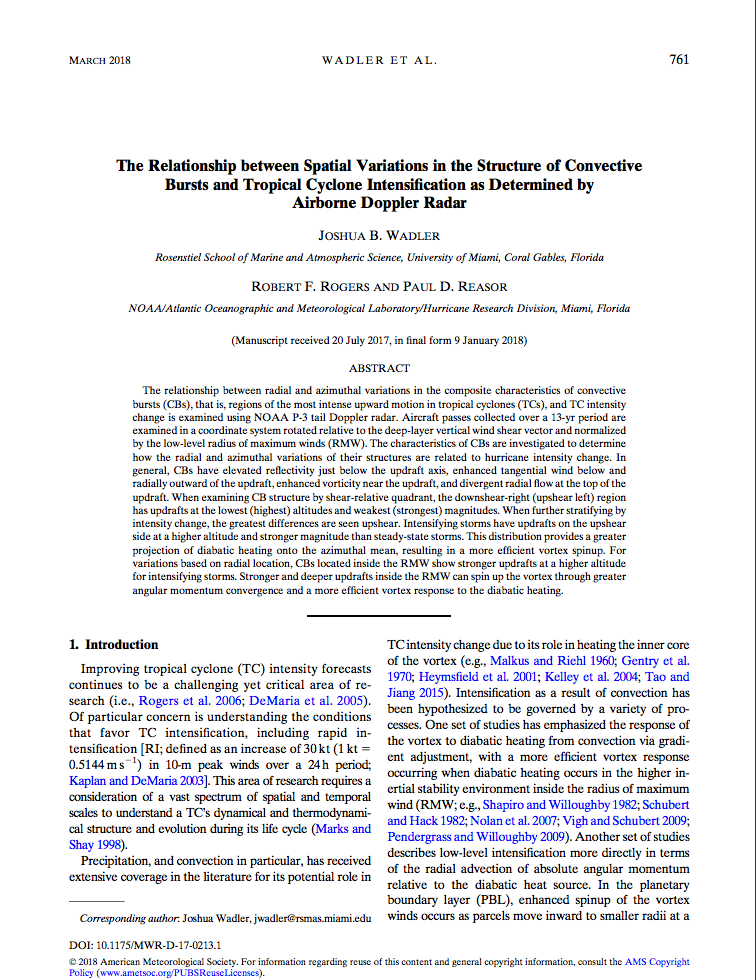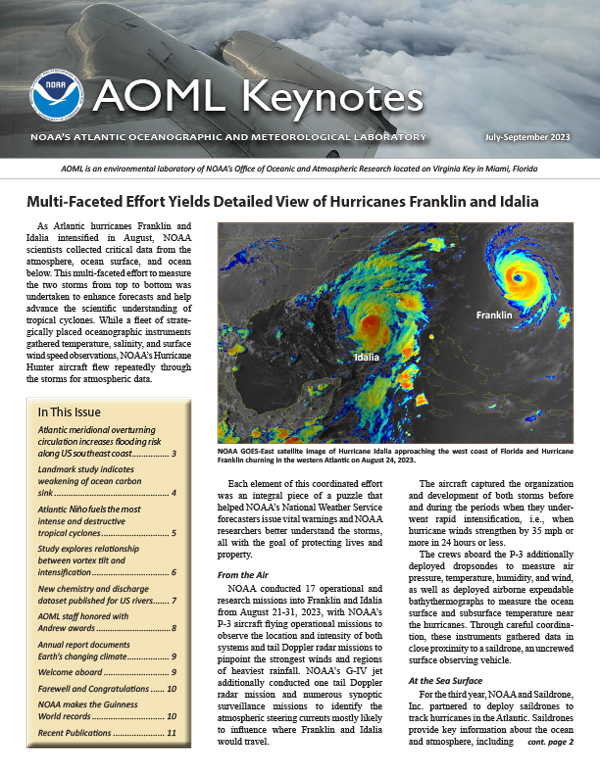Statistical Analysis of Convective Updrafts in Tropical Cyclone Rainbands Observed by Airborne Doppler Radar
Barron, N. R., Didlake Jr, A. C., & Reasor, P. D. (2022). Statistical Analysis of Convective Updrafts in Tropical Cyclone Rainbands Observed by Airborne Doppler Radar. Journal of Geophysical Research: Atmospheres, 127(6), e2021JD035718.4
Abstract: Ten years of airborne Doppler radar observations are used to study convective updrafts’ kinematic and reflectivity structures in tropical cyclone (TC) rainbands. An automated algorithm is developed to identify the strongest rainband updrafts across 12 hurricane-strength TCs. The selected updrafts are then collectively analyzed by their frequency, radius, azimuthal location (relative to the 200–850 hPa environmental wind shear), structural characteristics, and secondary circulation (radial/vertical) flow pattern. Rainband updrafts become deeper and stronger with increasing radius. A wavenumber-1 asymmetry arises, showing that in the downshear (upshear) quadrants of the TC, updrafts are more (less) frequent and deeper (shallower)…



